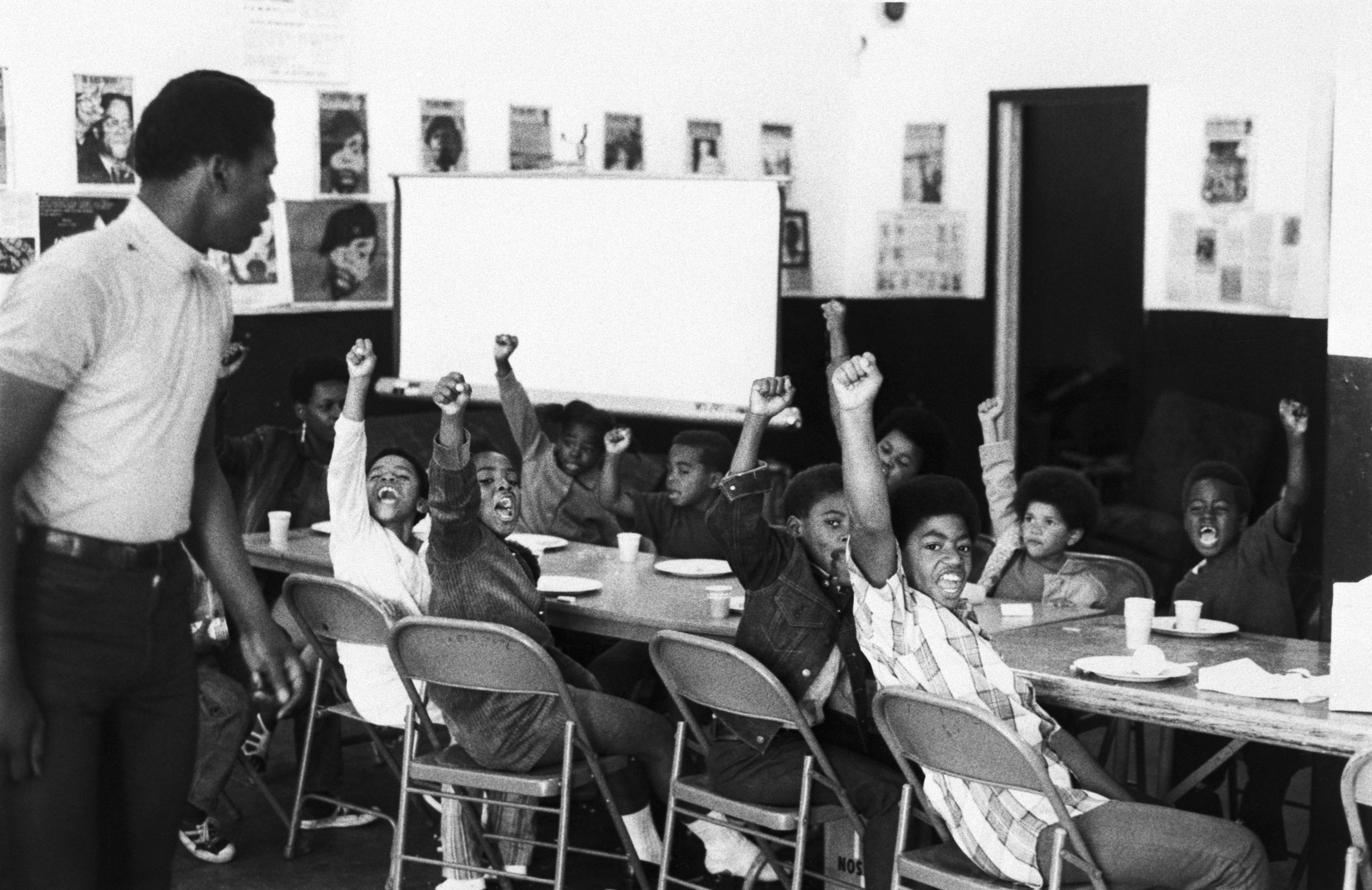What We Don’t Learn About the Black Panther Party — But Should
Lesson by Adam Sanchez and Jesse Hagopian
A teacher leads his students with the black power salute and slogans at a Black Panther liberation school.
On Monday April 1, 1967 “George Dowell and several neighbors from North Richmond, California . . . heard 10 gunshots. Sometime after 5:00 a.m., George came upon his older brother Denzil Dowell lying in the street, shot in the back and head. Police from the county sheriff’s department were there, but no ambulance had been called. . . . [The] sheriff’s office reported that deputy sheriffs Mel Brunkhorst and Kenneth Gibson had arrived at the scene at 4:50 a.m. on a tip from an unidentified caller about a burglary in progress. They claimed that when they arrived, Denzil Dowell and another man ran from the back of a liquor store and refused to stop when ordered to halt. Brunkhorst fired one blast from a shotgun, striking Dowell and killing him. . . . “For the Dowells, the official explanation did not add up, and community members helped the family investigate. . . . There was no sign of entry, forced or otherwise, at Bill’s Liquors, the store that Dowell had allegedly been robbing. Further, the police had reported that Dowell had not only run but also jumped two fences to get away before being shot down. But Dowell had a bad hip, a limp, and the family claimed that he could not run, let alone jump fences. . . . A doctor who worked on the case told the family that judging from the way the bullets had entered Dowell’s body, Dowell had been shot with his hands raised. . . . Mrs. Dowell publicly announced, ‘I believe the police murdered my son.’ . . . A white jury took little time deciding that the killing of unarmed Dowell was ‘justifiable homicide’ because the police officers on the scene had suspected that he was in the act of committing a felony. Outraged, the Black community demanded justice.”
—Joshua Bloom and Waldo E. Martin Jr., Black Against Empire:
The History and Politics of the Black Panther Party
Helping North Richmond’s Black community demand justice for the killing of Denzil Dowell was one of the first major organizing campaigns of the Black Panther Party. The first issue of The Black Panther newspaper, which at its height around 1970 had a circulation of 140,000 copies per week, asked “Why Was Denzil Dowell Killed?” Anyone reading the story of Dowell today can’t help but draw parallels to the unarmed Black men and women regularly murdered by police. The disparity between the police’s story and the Dowell family’s, the police harassment Dowell endured before his murder, the jury letting Dowell’s killer off without punishment, even the reports that Dowell had his hands raised while he was gunned down, eerily echo the police killings today that have led to the explosion of the movement for Black lives.
Yet when we learn about the early years of the Panthers, the organizing they did in Richmond — conducting their own investigation into Dowell’s death, confronting police who harassed Dowell’s family, helping mothers in the community organize against abuse at the local school, organizing armed street rallies in which hundreds filled out applications to join the party — is almost always absent.
The history of the Black Panther Party (BPP) holds vital lessons for today’s movement to confront racism and police violence — yet textbooks either misrepresent or minimize the significance of the Panthers. Armed with a revolutionary socialist ideology, they fought in Black communities across the nation for giving the poor access to decent housing, healthcare, education, and much more. And as the Panthers grew, so did the issues they organized around.

